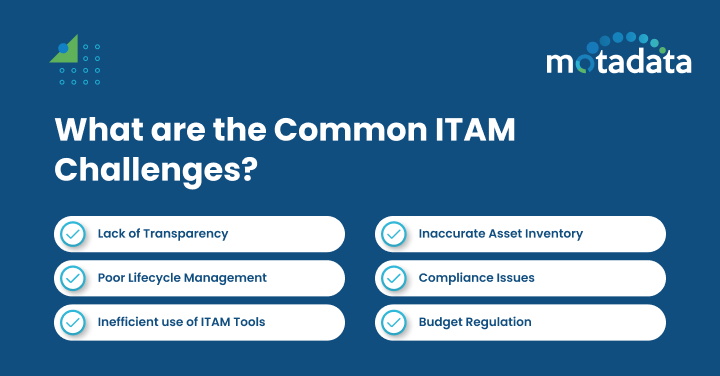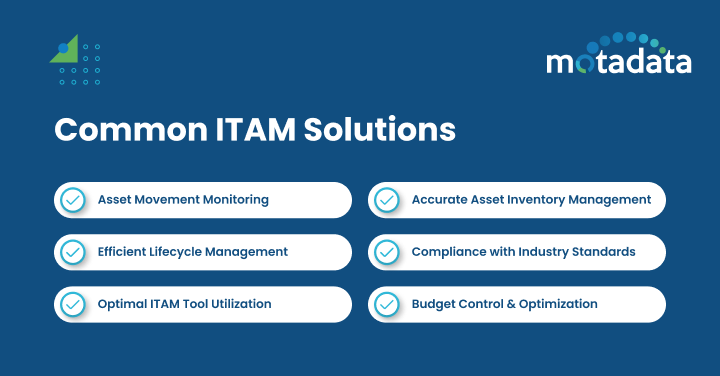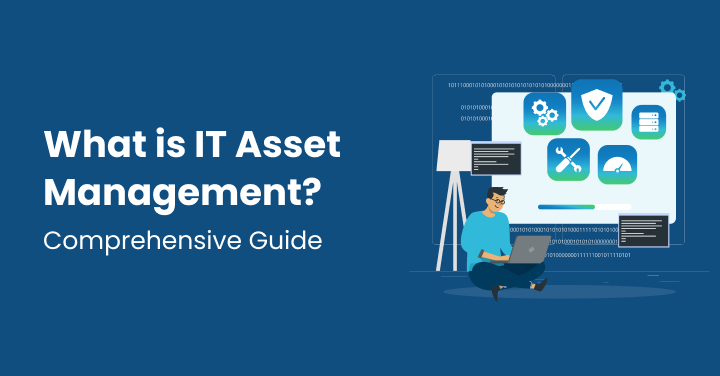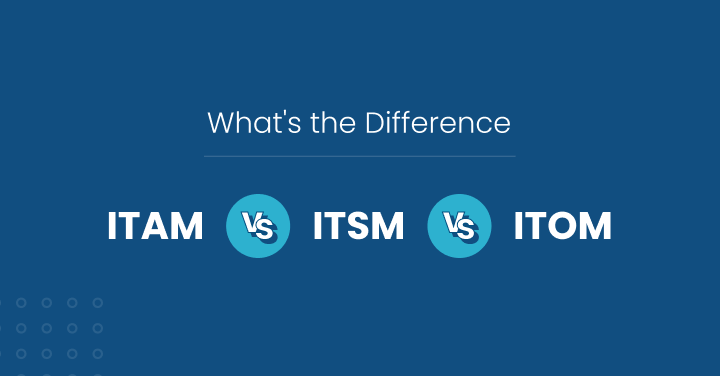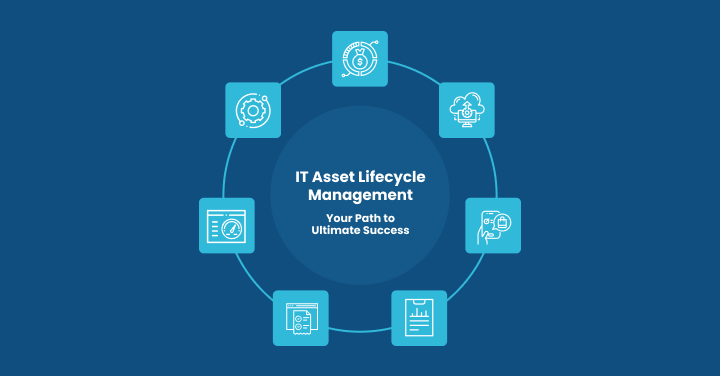No organization has remained the same small old place over time. It may expand both horizontally and vertically. As the organization’s size increases, so does the number of assets in use.
This may challenge IT managers to manage the increasing asset lot daily, from maintaining up-to-date technology with reduced costs to ensuring the assets are secured and meet regulatory compliance.
This is where the requirement of an efficient IT Asset Management tool comes into the picture, which helps zero the ITAM challenges.
The IT Asset Management tool oversees all the organization’s assets in an ever-increasing IT landscape.
They include hardware, software, non-IT, and consumable assets. This tool helps businesses standardize their operations and boost productivity.
However, managing these assets can pose a serious threat that the team must address to overcome the critical ITAM issues.
The most common ITAM challenges include:
- Lack of Transparency
- Inaccurate Asset Inventory
- Poor Lifecycle Management
- Compliance Issues
- Inefficient use of ITAM Tools
- Budget Regulation
What are the Common ITAM Challenges?
Below is a list of the common problems that hamper IT asset management and the overall business organization process.
Enterprises must keep a keen eye on these issues to resolve them as soon as possible and complete the work more efficiently.
1. Lack of Transparency:
When there are numerous assets in an organization, managing each of them manually becomes nearly impossible.
This causes a serious lack of visibility, turning the ITAM process into a guessing game. With limited details about the assets used in the organization, managing them becomes a nightmare.
When asset details like status, location, and usage are unclear, making informed decisions about them is very difficult. This can lead to unnecessary purchases, underutilized assets, and missed opportunities, hindering asset optimization.
Additionally, without clear and accessible data, identifying and resolving the issues becomes more time-consuming and error-prone. Addressing this issue involves implementing robust tracking systems.
It also requires ensuring that accurate and real-time data is available to all the relevant stakeholders.
2. Inaccurate Asset Inventory
Manual entry errors, obsolete records, and lack of proper smart procedures often lead to inaccurate asset inventories.
Human errors during data entry can result in incorrect or missing information. Records may become outdated when assets are frequently in movement, reassigned, or decommissioned without proper updates.
Additionally, the absence of a standardized process to track assets and update their information worsens these inaccuracies. These issues hinder effective judgment, resulting in cost overruns.
They also increase the compliance risk related to standards and norms. Thus, maintaining an accurate and latest asset inventory management system becomes paramount.
It helps optimize asset utilization, reduce costs, and maintain operational efficiency.
3. Poor Lifecycle Management
Poor lifecycle management means no proper tracking of assets, right from procurement to retirement. Where and who is using the assets is unknown and documented accurately.
This results in ineffective maintenance, premature fading, and missed cost-saving opportunities.
Without a proper lifecycle management tool, organizations may face more downtime, higher repair costs, and challenges in monitoring asset performance.
Thus, an effective IT lifecycle management tool is the highest priority in improving asset utilization.
4. Regulatory and Compliance Issues
In this world of digital transformation, rules and regulations constantly change.
This creates a key concern for IT asset managers to ensure that IT assets align with industry standards. Compliance issues hold a potential risk for organizations.
These concerns arise when businesses fail to comply with asset management regulatory requirements, internal policies, or industry standards.
The consequences of compliance issues include legal penalties, financial fines, and damage to the organization’s reputation.
Organizations must implement robust compliance processes to mitigate these risks, regularly audit their asset management practices, and stay updated on relevant regulations and standards.
5. Inefficient Use of ITAM Tools
One of the key ITAM challenges is the inefficient use of ITAM tools, which can stem from several factors.
A lack of training and awareness often causes underuse of the tool’s features, and poor system integration leads to fragmented data and duplicate entries.
Moreover, inaccurate asset tracking and lifecycle management may arise with poor data management practices.
Resistance to change among employees can further hinder the effective deployment and utilization of ITAM solutions.
Moreover, the absence of customization to fit specific organizational needs, scalability issues as the organization grows, and inadequate reporting and analytics capabilities all worsen the inefficiency.
These factors collectively lead to suboptimal asset management, missed automation and proactive management opportunities, and challenges in compliance and auditing processes.
6. Budget Regulation
Budget regulation often leads to constraints that impact on the overall efficiency and effectiveness of asset management processes.
Organizations may struggle to allocate sufficient funds for acquiring, maintaining, and upgrading IT assets, resulting in outdated or inadequate technology.
Tight budgets can limit the ability to invest in robust ITAM tools, training, and skilled personnel, which are essential for optimal asset management.
Furthermore, budget constraints can hinder proactive maintenance and timely replacements, increasing the risk of asset failure and associated downtime.
Balancing the need for cost control with efficient asset management requires strategic planning and prioritization to ensure that critical IT functions are not compromised while adhering to budgetary limitations.
ITAM Solution
The way every question has an answer, each of the ITAM challenges also has a solution. To overcome the above challenges, the following solutions or best practices can be adopted:
Keep an Eye on the Asset’s movement:
You can closely monitor your assets with a robust Asset Management tool like Motadata ServiceOps. You’ll have complete visibility of their whereabouts and can manage them efficiently.
The key features include:
1. Centralized Database:
Motadata ServiceOps simplifies maintaining an accurate IT asset inventory in a single location.
The database includes comprehensive details such as the asset’s name, location, owner, status, purchase date, hardware specifications, software details, etc.
It consolidates all this information under one umbrella, enabling IT asset managers to effortlessly monitor each asset’s life cycle and ensure proper management.
2. Automatic Asset visibility:
Hardware and Software assets can be scanned and discovered periodically based on a schedule. This ensures that your inventory is always current and keeps the ITAM challenges at bay.
3. Asset Tracking:
Features like geolocation and asset movement, which are used by the asset’s location and assignee, can be tracked in real time. This helps to monitor their usage, movement, and status changes efficiently.
4. Regular Audits:
Regular audits can be conducted to verify the asset information, ensure compliance, and identify discrepancies in your asset inventory to identify ITAM challenges before they cause an ill impact.
5. Monitoring through Reports and Dashboards:
Detailed reports can be generated to analyze asset performance.
These reports help understand asset utilization and lifecycle management, aiding in informed decision-making and strategic planning.
You can use predefined or create customized reports as per your requirements. Also, dashboards can be created with multiple KPIs and widgets depicting the required details on a single screen.
Accurate Management of Asset Inventory
Motadata ServiceOps addresses the challenge of inaccurate asset inventory through its comprehensive asset management features.
Automating asset discovery and data entry significantly reduces human errors and ensures accurate and current information.
With real-time tracking and automated updates, assets that are moved, reassigned, or decommissioned are promptly recorded, eliminating the problem of obsolete records.
The centralized database consolidates all asset information, enabling standardized processes for tracking and updating assets.
This enhances data accuracy, optimizes asset utilization, reduces costs, and ensures compliance with regulations and standards.
By leveraging Motadata ServiceOps, organizations can maintain a precise and latest asset inventory, ultimately improving operational efficiency and decision-making.
Also, the vendors from whom the assets are purchased are documented.
Smooth and Efficient Lifecycle Management
A powerful Asset Management tool must note it in complex IT environments where assets are frequently in motion.
And, with Motadata ServiceOps deployed in your network, no asset can be left out.
Thus, once the asset is added to the database, its entire lifecycle, from purchase to disposal, can be tracked effortlessly.
With automation features like SLA, workflows, and event notifications, any activity performed on the asset gets recorded and notified to the stakeholders.
Thus, with complete transparency, the exact status of the assets can be known, and accordingly, decisions can be taken whenever required.
This leads to prompt actions, less downtime, lower repair costs, and enhanced performance.
Compliance with the Industry and Regulatory Standards
Want to ensure that your assets are complied with the industry standards? No worries, Motadata ServiceOps IT Asset Management can do that for you. Your concern is our concern.
The tool develops a comprehensive compliance management system that tracks and manages compliance requirements.
The compliance status can be immediately known with real-time monitoring and reporting on the dashboard.
IT teams can conduct regular audits and assessments to identify gaps or non-compliance areas.
Additionally, staff should be trained on regulatory requirements and best practices to maintain compliance.
Utilizing automated workflows and alerts can help ensure timely updates and adherence to regulations, minimizing the risk of non-compliance.
By proactively managing compliance, organizations can avoid regulatory fines, protect their reputation, and ensure the data security of their IT assets.
Optimum Utilization of ITAM Tools
When you have the best asset management tool in your organization, using it optimally is necessary.
Often, people are ignorant about its benefits and its facilities.
Hence, to utilize the ITAM tool efficiently, follow the below practices:
1. Conduct Training for ITSM Tool:
Provide training to your employees to make them aware of the perks of the tool.
During the sessions, give them a hands-on experience with the tool. This helps them understand the tool easily and speedily.
2. Pursue Employees to Adapt:
Change is inevitable. To be competitive in the market, you must be flexible enough to accept any technology with open hands.
However, employees often hesitate to adapt to changes in the environment and workplace.
Hence, in one-to-one or general meetings, you should talk to the staff and guide them on how smooth their lives will become with the acceptance of new technology.
3. Better Collaboration with AI:
Collaborate with people within and outside your team to make things work in the organization, thereby achieving the goal of optimum utilization.
4. Create Strategic Plans:
Once the tool is within your organization, create plans for using it to manage all the assets efficiently.
5. Incorporate Automation:
Implement automation features like workflow, integrations, smart suggestions, and email notifications to make your work more effortless.
Budget Control
Every business aims to profit by following a strict budget control strategy.
Strategic planning and prioritization are essential to balance cost control with efficient IT management.
This approach keeps critical IT functions intact while staying within budgetary limits. To achieve this, you can implement proactive maintenance schedules to increase the lifespan of assets, reducing the need for frequent replacements.
Additionally, investing in scalable ITAM tools that align with the organization’s growth ensures long-term cost savings.
Regularly reviewing asset management practices helps maintain efficiency while aligning with budget constraints, balancing cost control and effective management.
Conclusion
Now, you must understand the challenges businesses face in IT asset management and the solutions to overcome them.
So, are you on a round to search for a best-fit IT Asset Management solution? If yes, then you are at the right place.
Motadata ServiceOps IT Asset Management solution can be the right choice for you.
It offers a comprehensive suite of features that enhance asset visibility, accuracy, and compliance while streamlining the lifecycle management and optimizing resource utilization.
You can fully control all the IT assets with the help of hardware asset management, software asset management, non-IT asset management, Consumable asset management, centralized database, automated asset discovery, real-time tracking, and powerful reporting capabilities.
This ensures they are used efficiently and remain compliant with the industry standards.
By investing in the right tools, training, and strategic planning, businesses can overcome common ITAM challenges and achieve long-term cost savings and operational excellence.
A well-executed ITAM strategy is vital to maintaining a competitive edge in today’s technology-driven world.



